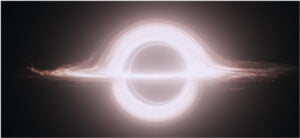Project area/S
- Extragalactic Radio Science/ The Distant Universe /Epoch of
Reionisation
Project Details
Work over the last two decades has revealed a population of massive black holes (billions of times more massive than the Sun) in the early Universe. Understanding how they formed so early and how they influenced their host galaxies and environments is a key question in astrophysics. Radio surveys have provided a method to find massive black holes in the early Universe; as they accrete rapidly they produce powerful jets observed in the radio across cosmic time. We have used the Murchison Widefield Array (MWA) low-frequency radio telescope to find candidate massive black holes in the early Universe including one powerful radio galaxy just one billion years after the Big Bang.
You will process new MWA observations in order to:
(a) make deep images in order to search for new candidate black holes in the early Universe. These will be some of the deepest images yet made with the MWA and enable a wealth of additional science.
(b) Process the same data to produce spectra of these candidate sources in order to search for absorption of the 21cm line redshift to low frequencies. This absorption is due to the increased neutral hydrogen as we probe black holes into the epoch of reionisation.
Student Attributes
Academic Background
Physics or computing undergrad, some astronomy background
preferred.
Computing Skills
Some programming will be required, Python is the preferred language and bash is involved in the MWA pipelines. Ability to attain basic understanding of these languages is required.
Training Requirement
Experience with HPC computing (here Pawsey), programming in python and bash, use of typical astronomical tools like Topcat and ds9.
Project Timeline
- Week 1 Inductions and project introduction: Background reading and familiarisation with data processing.
- Week 2 Initial Presentation: summary of work done so far from the literature, commence processing of data on Pawsey.
- Week 3 Process first half of MWA frequency bands
- Week 4 Process second half of MWA frequency bands
- Week 5 Extract fluxes and selection candidate high-z radio sources
- Week 6 Create radio spectra of these candidates
- Week 7 Create radio spectra of these candidates
- Week 8 Combine radio spectra, compare with other results in the literature. Write presentation
- Week 9 Final Presentation
- Week 10 Final Report

Artist’s impression of lensing around a blackhole. Credit: Oliver James et al., 2015 Class. Quantum Grav. 32 065001
